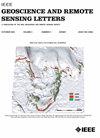利用VIIRS光热数据同时估算多个地表参数
IF 4
3区 地球科学
Q2 ENGINEERING, ELECTRICAL & ELECTRONIC
引用次数: 12
摘要
利用遥感数据估算地表参数的传统方法通常侧重于特定光谱区域的单一参数,导致当前卫星产品在物理和时空上存在不一致性。我们最近提出了一种统一的反演方案,可以同时从可见光、近红外和热红外MODIS数据中估计一套参数。在本文中,我们实施了该方案,从可见光红外成像辐射计套件(VIIRS)数据中估计6个时间序列参数[叶面积指数、吸收的光合有效辐射比例、地表反照率、地表发射率、地表温度(LST)和上升流长波辐射(LWUP)]。对这些方案的几个组成部分进行了改进,包括引入积雪双向反射分布函数模型,确定最佳波段组合,以及通过考虑积雪分数更好地估计积雪表面发射率。利用SURFRAD、CarboEuropeIP和FLUXNET的12个站点的测量数据进行验证,并与MODIS和Global Land-Surface Satellite产品进行了比对:反演的反照率、地表温度和LWUP的精度(R^{2}$)分别为0.77、0.96和0.95,均方根误差分别为0.06、2.9 K和18.3 W/m2,偏差分别为0.01、0.09 K和- 0.08 W/m2。检索参数的精度与现有产品相当或更高,表明该统一算法可以有效地应用于VIIRS数据,具有较高的物理和时间一致性和精度。本文章由计算机程序翻译,如有差异,请以英文原文为准。
Simultaneous Estimation of Multiple Land-Surface Parameters From VIIRS Optical-Thermal Data
Traditional methods for estimating land-surface parameters from remotely sensed data generally focus on a single parameter with a specific spectral region, resulting in physical and spatiotemporal inconsistencies in current satellite products. We recently proposed a unified inversion scheme to estimate a suite of parameters simultaneously from both visible and near-infrared and thermal-infrared MODIS data. In this letter, we implemented this scheme to estimate six time-series parameters [leaf area index, fraction of absorbed photosynthetically active radiation, surface albedo, land-surface emissivity, land-surface temperature (LST), and upwelling longwave radiation (LWUP)] from the Visible Infrared Imaging Radiometer Suite (VIIRS) data. Several components of these schemes are refined, including the incorporation of a snow bidirectional reflectance distribution function model, determination of the best band combination, and better estimation of the snow-covered surface emissivity by accounting for the snow-cover fraction. Validation using the measurements at 12 sites of SURFRAD, CarboEuropeIP, and FLUXNET, and intercomparisons with MODIS and Global Land-Surface Satellite products, are carried out: the retrieved albedo, LST, and LWUP achieved accuracies ( $R^{2}$ ) of 0.77, 0.96, and 0.95, root mean square errors of 0.06, 2.9 K, and 18.3 W/m2, and biases of 0.01, 0.09 K, and −0.08 W/m2, respectively. The retrieved parameters can achieve comparable or higher accuracy than existing products, which indicates that the unified algorithm can be applied effectively to the VIIRS data with high physical and temporal consistency and accuracy.
求助全文
通过发布文献求助,成功后即可免费获取论文全文。
去求助
来源期刊

IEEE Geoscience and Remote Sensing Letters
工程技术-地球化学与地球物理
CiteScore
7.60
自引率
12.50%
发文量
1113
审稿时长
3.4 months
期刊介绍:
IEEE Geoscience and Remote Sensing Letters (GRSL) is a monthly publication for short papers (maximum length 5 pages) addressing new ideas and formative concepts in remote sensing as well as important new and timely results and concepts. Papers should relate to the theory, concepts and techniques of science and engineering as applied to sensing the earth, oceans, atmosphere, and space, and the processing, interpretation, and dissemination of this information. The technical content of papers must be both new and significant. Experimental data must be complete and include sufficient description of experimental apparatus, methods, and relevant experimental conditions. GRSL encourages the incorporation of "extended objects" or "multimedia" such as animations to enhance the shorter papers.
 求助内容:
求助内容: 应助结果提醒方式:
应助结果提醒方式:


